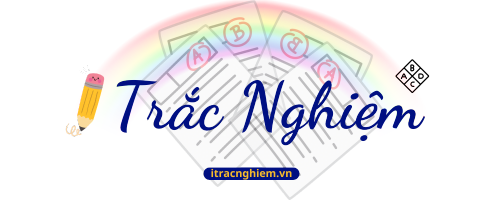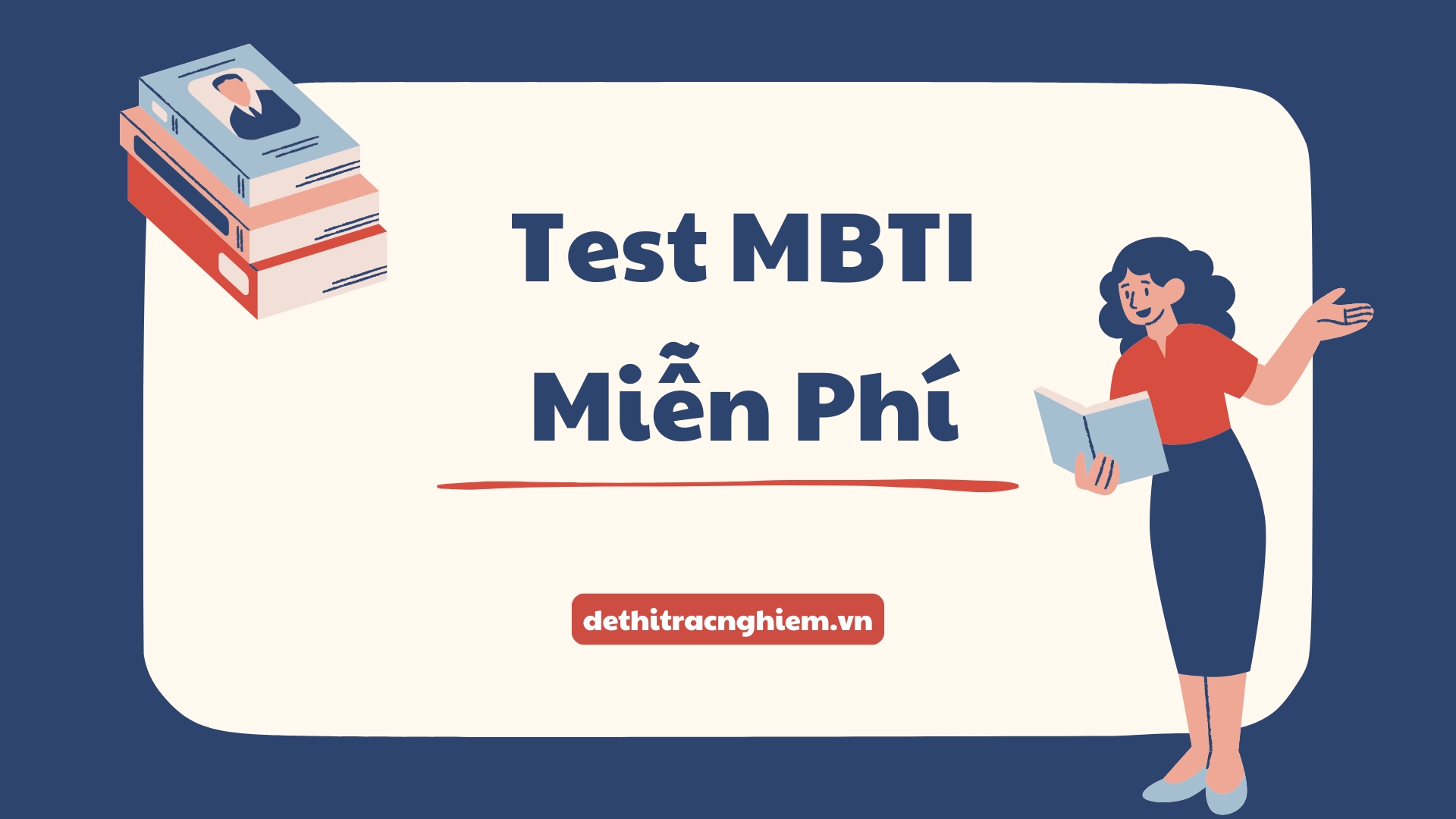Đề thi thử Đại học 2025 môn Tiếng Anh – Trường THCS & THPT Chuyên Khuyến – Bình Dương là một trong những đề tiêu biểu thuộc Tổng hợp đề thi thử môn Tiếng Anh THPT QG, nằm trong chương trình Đề thi vào Đại học. Đây là đề thi được biên soạn và tổ chức bởi Trường THCS & THPT Chuyên Khuyến – tỉnh Bình Dương, nhằm giúp học sinh lớp 12 đánh giá năng lực và rèn luyện kỹ năng làm bài thi theo đúng chuẩn của kỳ thi Tốt nghiệp THPT Quốc gia năm 2025.
Đề thi được xây dựng bám sát cấu trúc đề minh họa mới nhất của Bộ Giáo dục và Đào tạo, với đầy đủ các phần: ngữ âm (phát âm – trọng âm), ngữ pháp – từ vựng, chức năng giao tiếp, tìm lỗi sai, viết lại câu, và đọc hiểu. Các câu hỏi trong đề được sắp xếp theo độ khó tăng dần, từ cơ bản đến vận dụng cao, giúp học sinh phát triển toàn diện các kỹ năng ngôn ngữ và khả năng phân tích – xử lý đề thi nhanh chóng, chính xác.
Hãy cùng Dethitracnghiem.vn khám phá ngay đề thi thử của Trường THCS & THPT Chuyên Khuyến – Bình Dương và bắt đầu luyện tập để chinh phục kỳ thi Tốt nghiệp THPT năm 2025 với kết quả vượt mong đợi!
- Số trang: 4 trang
- Hình thức: Trắc nghiệm
- Thời gian làm bài: 50 phút (không kể thời gian phát đề)
ĐỀ THI THỬ ĐẠI HỌC MÔN TIẾNG ANH NĂM 2025 THCS & THPT CHUYÊN KHUYẾN – BÌNH DƯƠNG
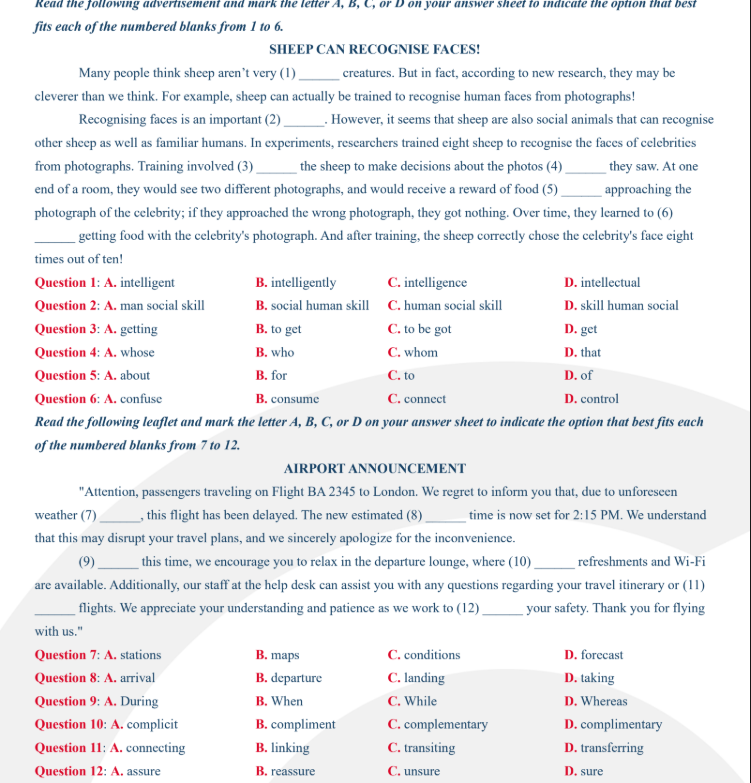
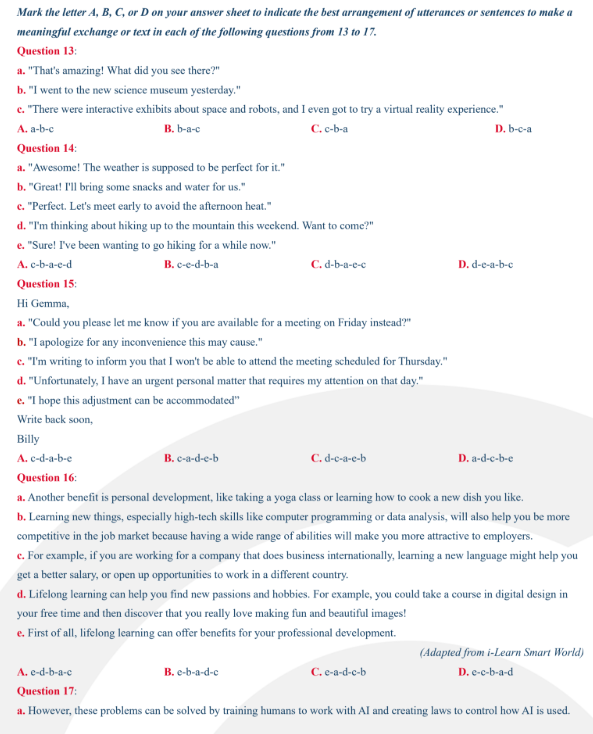
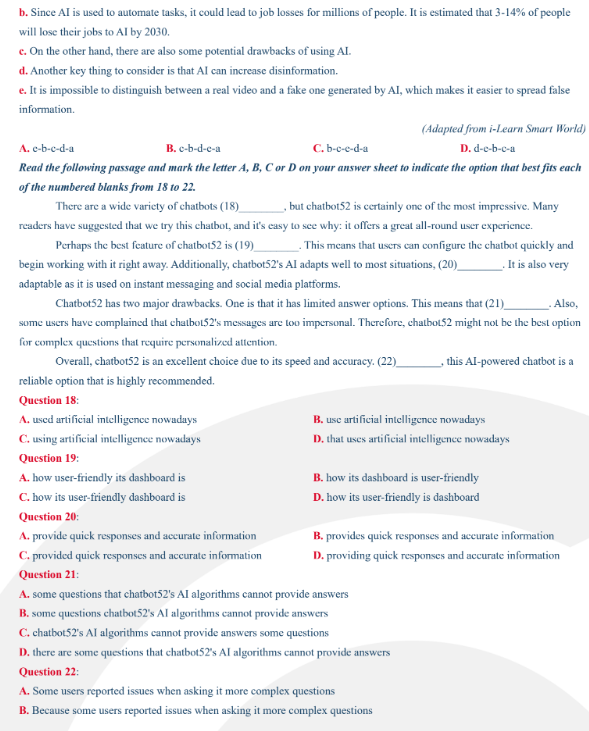
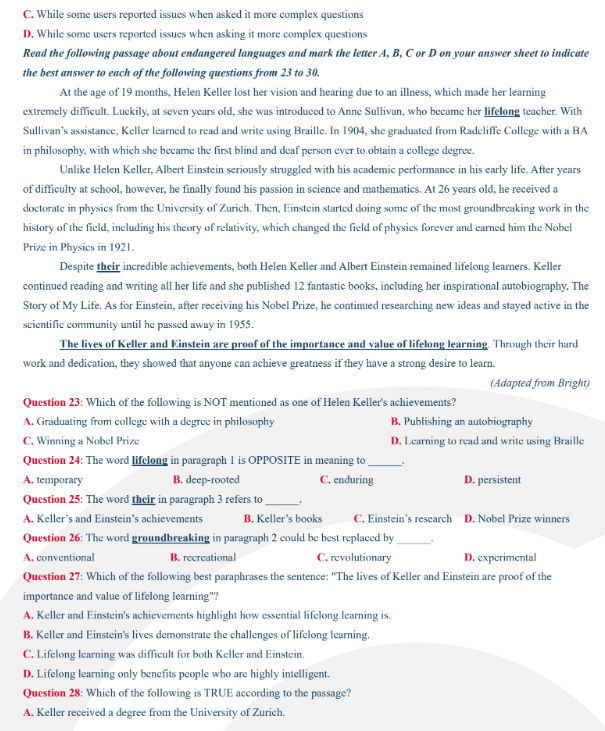
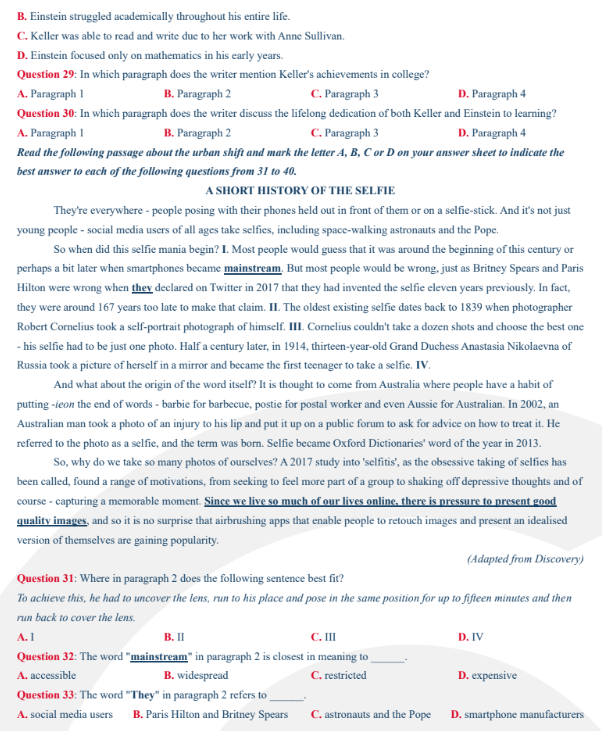
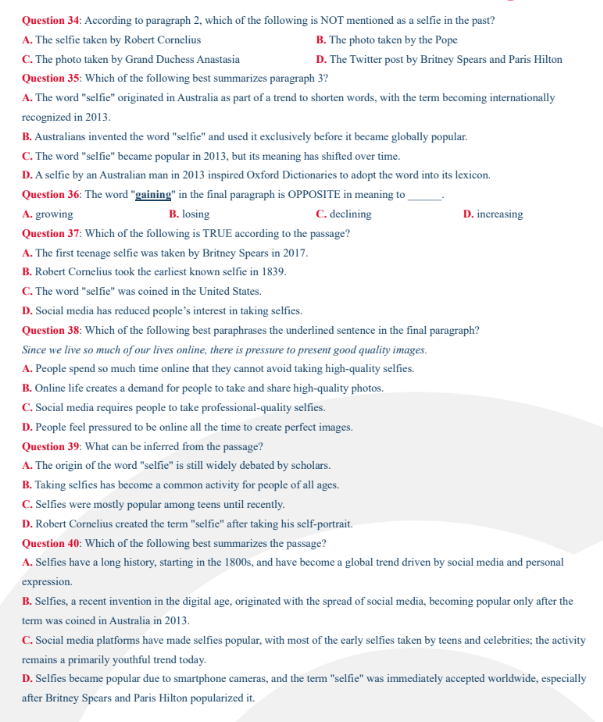
Read the following passage and mark the letter A, B, C or D on your answer sheet to indicate the option that best fits each of the numbered blanks from 1 to 6.
SHEEP CAN RECOGNISE FACES!
Many people think sheep aren’t very (1) ____ creatures. But in fact, according to new research, they may be cleverer than we think. For example, sheep can actually be trained to recognise human faces from photographs!
Recognising faces is an important (2) ____. However, it seems that sheep are also social animals that can recognise other sheep as well as familiar humans. In experiments, researchers trained eight sheep to recognise the faces of celebrities from photographs. Training involved (3) ____ the sheep to make decisions about the photos (4) ____ they saw. At one end of a room, they would see two different photographs, and would receive a reward of food (5) ____ approaching the photograph of the celebrity; if they approached the wrong photograph, they got nothing. Over time, they learned to (6) ____ getting food with the celebrity’s photograph. And after training, the sheep correctly chose the celebrity’s face eight times out of ten!
Question 1:
A. intelligent
B. intelligently
C. intelligence
D. intellectual
A. intelligent
Question 2:
A. man social skill
B. social human skill
C. human social skill
D. skill human social
C. human social skill
Question 3:
A. getting
B. to get
C. to be got
D. get
B. to get
Question 4:
A. whose
B. who
C. whom
D. that
D. that
Question 5:
A. about
B. for
C. to
D. of
B. for
Question 6:
A. confuse
B. consume
C. connect
D. control
D. control
Read the following leaflet and mark the letter A, B, C or D on your answer sheet to indicate the option that best fits each of the numbered blanks from 7 to 12.
AIRPORT ANNOUNCEMENT
“Attention, passengers traveling on Flight BA 2345 to London. We regret to inform you that, due to unforeseen weather (7) ____, this flight has been delayed. The new estimated (8) ____ time is now set for 2:15 PM. We understand that this may disrupt your travel plans, and we sincerely apologize for the inconvenience.
(9) ____ this time, we encourage you to relax in the departure lounge, where (10) ____ refreshments and Wi-Fi are available. Additionally, our staff at the help desk can assist you with any questions regarding your travel itinerary or (11) ____ flights. We appreciate your understanding and patience as we work to (12) ____ your safety. Thank you for flying with us.”
Question 7:
A. stations
B. maps
C. conditions
D. forecast
C. conditions
Question 8:
A. arrival
B. departure
C. landing
D. taking
B. departure
Question 9:
A. During
B. When
C. While
D. Whereas
A. During
Question 10:
A. complicit
B. compliment
C. complementary
D. complimentary
D. complimentary
Question 11:
A. connecting
B. linking
C. transiting
D. transferring
A. connecting
Question 12:
A. assure
B. reassure
C. unsure
D. sure
A. assure
Mark the letter A, B, C or D to indicate the best arrangement of utterances or sentences to make a meaningful exchange or text in each of the following questions from 13 to 17.
Question 13:
a. “That’s amazing! What did you see there?”
b. “I went to the new science museum yesterday.”
c. “There were interactive exhibits about space and robots, and I even got to try a virtual reality experience.”
A. a-b-c
B. b-a-c
C. c-b-a
D. b-c-a
B. b-a-c
Question 14:
a. “Awesome! The weather is supposed to be perfect for it.”
b. “Great! I’ll bring some snacks and water for us.”
c. “Perfect. Let’s meet early to avoid the afternoon heat.”
d. “I’m thinking about hiking up to the mountain this weekend. Want to come?”
e. “Sure! I’ve been wanting to go hiking for a while now.”
A. c-b-a-e-d
B. b-c-e-d-a
C. d-b-a-e-c
D. d-e-a-c-b
D. d-e-a-c-b
Question 15:
Hi Gemma,
a. “Could you please let me know if you are available for a meeting on Friday instead?”
b. “I apologize for any inconvenience this may cause.”
c. “I’m writing to inform you that I won’t be able to attend the meeting scheduled for Thursday.”
d. “Unfortunately, I have an urgent personal matter that requires my attention on that day.”
e. “I hope this adjustment can be accommodated.”
Write back soon,
Billy
A. c-d-a-b-e
B. c-a-d-e-b
C. d-c-a-e-b
D. a-d-c-b-e
A. c-d-a-b-e
Question 16:
a. Another benefit is personal development, like taking a yoga class or learning how to cook a new dish you like.
b. Learning new things, especially high-tech skills like computer programming or data analysis, will also help you be more competitive in the job market because a wide range of abilities will make you more attractive to employers.
c. For example, if you are working for a company that does business internationally, learning a new language might help you get a better salary, or open up opportunities to work in a different country.
d. Lifelong learning can help you find new passions and hobbies. For example, you could take a course in digital design in your free time and then discover that you really love making fun and beautiful images!
e. First of all, lifelong learning can offer benefits for your professional development.
A. e-d-b-a-c
B. e-b-a-d-c
C. e-a-d-c-b
D. e-c-b-a-d
D. e-c-b-a-d
Question 17:
a. However, these problems can be solved by training humans to work with AI and creating laws to control how AI is used.
b. Since AI is used to automate tasks, it could lead to job losses for millions of people. It is estimated that 3-14% of people will lose their jobs to AI by 2030.
c. On the other hand, there are also some potential drawbacks of using AI.
d. Another key thing to consider is that AI can increase disinformation.
e. It is impossible to distinguish between a real video and a fake one generated by AI, which makes it easier to spread false information.
A. c-e-b-d-a
B. c-b-d-e-a
C. c-b-e-d-a
D. d-c-b-e-a
C. c-b-e-d-a
Read the following passage and mark the letter A, B, C or D on your answer sheet to indicate the best answer to each of the following questions from 18 to 22.
There are a wide variety of chatbots (18) ____, but Chatbot52 is certainly one of the most impressive. Many readers have suggested that we try this chatbot, and it’s easy to see why: it offers a great all-round user experience.
Perhaps the best feature of Chatbot52 is (19) ____. This means that users can configure the chatbot quickly and begin working with it right away. Additionally, Chatbot52’s AI adapts well to most situations, (20) ____. It is also very adaptable as it is used on instant messaging and social media platforms.
Chatbot52 has two major drawbacks. One is that it has limited answer options. This means that (21) ____. Also, some users have complained that Chatbot52’s messages are too impersonal. Therefore, Chatbot52 might not be the best option for complex questions that require personalized attention.
Overall, Chatbot52 is an excellent choice due to its speed and accuracy. (22) ____, this AI-powered chatbot is a reliable option that is highly recommended.
Question 18:
A. used artificial intelligence nowadays
B. use artificial intelligence nowadays
C. using artificial intelligence nowadays
D. that uses artificial intelligence nowadays
C. using artificial intelligence nowadays
Question 19:
A. how user-friendly its dashboard is
B. how its dashboard is user-friendly
C. how its user-friendly is dashboard
D. how its user-friendly is dashboard
B. how its dashboard is user-friendly
Question 20:
A. provide quick responses and accurate information
B. provides quick responses and accurate information
C. provided quick responses and accurate information
D. providing quick responses and accurate information
D. providing quick responses and accurate information
Question 21:
A. some questions that Chatbot52’s AI algorithms cannot provide answers
B. some questions Chatbot52’s AI algorithms cannot provide answers
C. chatbot52’s AI algorithms cannot provide answers some questions
D. there are some questions that Chatbot52’s AI algorithms cannot provide answers
D. there are some questions that Chatbot52’s AI algorithms cannot provide answers
Question 22:
A. Some users reported issues when asking it more complex questions
B. Because some users reported issues when asking it more complex questions
C. While some users reported issues when asked it more complex questions
D. While some users reported issues when asking it more complex questions
C. While some users reported issues when asked it more complex questions
Read the following passage about endangered languages and mark the letter A, B, C or D to indicate the best answer to each of the following questions from 23 to 30.
At the age of 19 months, Helen Keller lost her vision and hearing due to an illness, which made her learning extremely difficult. Luckily, at seven years old, she was introduced to Anne Sullivan, who became her lifelong teacher. With Sullivan’s assistance, Keller learned to read and write using Braille. In 1904, she graduated from Radcliffe College with a BA in philosophy, with which she became the first blind and deaf person ever to obtain a college degree.
Unlike Helen Keller, Albert Einstein seriously struggled with his academic performance in his early life. After years of difficulty at school, however, he finally found his passion in science and mathematics. At 26 years old, he received a doctorate in physics from the University of Zurich. Then, Einstein started doing some of the most groundbreaking work in the history of the field, including his theory of relativity, which changed the field of physics forever and earned him the Nobel Prize in Physics in 1921.
Despite their incredible achievements, both Helen Keller and Albert Einstein remained lifelong learners. Keller continued reading and writing all her life and she published 12 fantastic books, including her inspirational autobiography, The Story of My Life. As for Einstein, after receiving his Nobel Prize, he continued researching new ideas and stayed active in the scientific community until he passed away in 1955.
The lives of Keller and Einstein are proof of the importance and value of lifelong learning. Through their hard work and dedication, they showed that anyone can achieve greatness if they have a strong desire to learn.
Question 23: Which of the following is NOT mentioned as one of Helen Keller’s achievements?
A. Graduating from college with a degree in philosophy
B. Publishing an autobiography
C. Winning a Nobel Prize
D. Learning to read and write using Braille
C. Winning a Nobel Prize
Question 24: The word “lifelong” in paragraph 1 is OPPOSITE in meaning to ____.
A. temporary
B. deep-rooted
C. enduring
D. persistent
A. temporary
Question 25: The word “their” in paragraph 3 refers to ____.
A. Keller’s and Einstein’s achievements
B. Keller’s books
C. Einstein’s research
D. Nobel Prize winners
A. Keller’s and Einstein’s achievements
Question 26: The word “groundbreaking” in paragraph 2 could be best replaced by ____.
A. conventional
B. recreational
C. revolutionary
D. experimental
C. revolutionary
Question 27: Which of the following best paraphrases the sentence: “The lives of Keller and Einstein are proof of the importance and value of lifelong learning”?
A. Keller and Einstein’s achievements highlight how essential lifelong learning is.
B. Keller and Einstein’s lives demonstrate the challenges of lifelong learning.
C. Lifelong learning was difficult for both Keller and Einstein.
D. Lifelong learning only benefits people who are highly intelligent.
A. Keller and Einstein’s achievements highlight how essential lifelong learning is.
Question 28: Which of the following is TRUE according to the passage?
A. Keller received a degree from the University of Zurich.
B. Einstein struggled academically throughout his entire life.
C. Keller was able to read and write due to her work with Anne Sullivan.
D. Einstein focused only on mathematics in his early years.
C. Keller was able to read and write due to her work with Anne Sullivan.
Question 29: In which paragraph does the writer mention Keller’s achievements in college?
A. Paragraph 1
B. Paragraph 2
C. Paragraph 3
D. Paragraph 4
A. Paragraph 1
Question 30: In which paragraph does the writer discuss the lifelong dedication of both Keller and Einstein to learning?
A. Paragraph 1
B. Paragraph 2
C. Paragraph 3
D. Paragraph 4
C. Paragraph 3
Read the following passage about the urban shift and mark the letter A, B, C or D on your answer sheet to indicate the best answer to each of the following questions from 31 to 40.
A SHORT HISTORY OF THE SELFIE
They’re everywhere – people posing with their phones held out in front of them or on a selfie-stick. And it’s not just young people – social media users of all ages take selfies, including space-walking astronauts and the Pope.
So when did this selfie mania begin? I. Most people would guess that it was around the beginning of this century or perhaps a bit later when smartphones became mainstream. But most people would be wrong, just as Britney Spears and Paris Hilton were wrong when they declared on Twitter in 2017 that they had invented the selfie eleven years previously. In fact, they were around 167 years too late to make that claim. II. The oldest existing selfie dates back to 1839 when photographer Robert Cornelius took a self-portrait photograph of himself. III. Cornelius couldn’t take a dozen shots and choose the best one – his selfie had to be just one photo. Half a century later, in 1914, thirteen-year-old Grand Duchess Anastasia Nikolaevna of Russia took a picture of herself in a mirror and became the first teenager to take a selfie. IV.
And what about the origin of the word itself? It is thought to come from Australia where people have a habit of putting -ieon the end of words – barbie for barbecue, postie for postal worker and even Aussie for Australian. In 2002, an Australian man took a photo of an injury to his lip and put it up on a public forum to ask for advice on how to treat it. He referred to the photo as a selfie, and the term was born. Selfie became Oxford Dictionaries’ word of the year in 2013.
So, why do we take so many photos of ourselves? A 2017 study into ‘selfitis’, as the obsessive taking of selfies has been called, found a range of motivations, from seeking to feel more part of a group to shaking off depressive thoughts and of course – capturing a memorable moment. Since we live so much of our lives online, there is pressure to present good quality images, and so it is no surprise that airbrushing apps that enable people to retouch images and present an idealised version of themselves are gaining popularity.
Question 31: Where in paragraph 2 does the following sentence best fit?
To achieve this, he had to uncover the lens, run to his place and pose in the same position for up to fifteen minutes and then run back to cover the lens.
A. I
B. II
C. III
D. IV
C. III
Question 32: The word “mainstream” in paragraph 2 is closest in meaning to ____.
A. accessible
B. widespread
C. restricted
D. expensive
B. widespread
Question 33: The word “They” in paragraph 2 refers to ____.
A. social media users
B. Paris Hilton and Britney Spears
C. astronauts and the Pope
D. smartphone manufacturers
B. Paris Hilton and Britney Spears
Question 34: According to paragraph 2, which of the following is NOT mentioned as a selfie in the past?
A. The selfie taken by Robert Cornelius
B. The photo taken by the Pope
C. The photo taken by Grand Duchess Anastasia
D. The Twitter post by Britney Spears and Paris Hilton
B. The photo taken by the Pope
Question 35: Which of the following best summarizes paragraph 3?
A. The word “selfie” originated in Australia as part of a trend to shorten words, with the term becoming internationally recognized in 2013.
B. Australians invented the word “selfie” and used it exclusively before it became globally popular.
C. The word “selfie” became popular in 2013, but its meaning has shifted over time.
D. A selfie by an Australian man in 2013 inspired Oxford Dictionaries to adopt the word into its lexicon.
A. The word “selfie” originated in Australia as part of a trend to shorten words, with the term becoming internationally recognized in 2013.
Question 36: The word “gaining” in the final paragraph is OPPOSITE in meaning to ____.
A. growing
B. losing
C. declining
D. increasing
B. losing
Question 37: Which of the following is TRUE according to the passage?
A. The first teenage selfie was taken by Britney Spears in 2017.
B. Robert Cornelius took the earliest known selfie in 1839.
C. The word “selfie” was coined in the United States.
D. Social media has reduced people’s interest in taking selfies.
B. Robert Cornelius took the earliest known selfie in 1839.
Question 38: Which of the following best paraphrases the underlined sentence in the final paragraph?
Since we live so much of our lives online, there is pressure to present good quality images.
A. People spend so much time online that they cannot avoid taking high-quality selfies.
B. Online life creates a demand for people to take and share high-quality photos.
C. Social media requires people to take professional-quality selfies.
D. People feel pressured to be online all the time to create perfect images.
B. Online life creates a demand for people to take and share high-quality photos.
Question 39: What can be inferred from the passage?
A. The origin of the word “selfie” is still widely debated by scholars.
B. Taking selfies has become a common activity for people of all ages.
C. Selfies were mostly popular among teens until recently.
D. Robert Cornelius created the term “selfie” after taking his self-portrait.
B. Taking selfies has become a common activity for people of all ages.
Question 40: Which of the following best summarizes the passage?
A. Selfies have a long history, starting in the 1800s, and have become a global trend driven by social media and personal expression.
B. Selfies, a recent invention in the digital age, originated with the spread of social media, becoming popular only after the term was coined in 2013.
C. Social media platforms have made selfies popular, with most of the early selfies taken by teens and celebrities; the activity remains a primarily youthful trend today.
D. Selfies became popular due to smartphone cameras, and the term “selfie” was immediately accepted worldwide, especially after Britney Spears and Paris Hilton popularized it.
A. Selfies have a long history, starting in the 1800s, and have become a global trend driven by social media and personal expression.
Mục đích tổ chức kỳ thi Đại học năm 2025 là gì?
Căn cứ theo quy chế hiện hành của Bộ Giáo dục và Đào tạo và các văn bản hướng dẫn tổ chức kỳ thi Đại học năm 2025, mục đích của kỳ thi là:
– Đánh giá kết quả học tập của học sinh sau 12 năm học theo yêu cầu của chương trình giáo dục phổ thông.
– Lấy kết quả thi để xét công nhận tốt nghiệp trung học phổ thông và làm căn cứ tuyển sinh đại học, cao đẳng.
– Góp phần đánh giá chất lượng giáo dục của địa phương và cả nước, làm cơ sở điều chỉnh nội dung, phương pháp dạy học trong nhà trường.
Thí sinh thi Đại học năm 2025 có bắt buộc thi môn Tiếng Anh không?
Theo quy định hiện hành của Bộ Giáo dục và Đào tạo và hướng dẫn tổ chức kỳ thi tốt nghiệp Đại học năm 2025, thí sinh dự thi phải thực hiện như sau:
– Thi 3 môn bắt buộc: Toán, Ngữ văn và Ngoại ngữ.
– Ngoài ra, thí sinh phải chọn một trong hai bài thi tổ hợp: Khoa học Tự nhiên (gồm các môn Vật lí, Hóa học, Sinh học) hoặc Khoa học Xã hội (gồm các môn Lịch sử, Địa lí, Giáo dục công dân – dành cho học sinh học chương trình giáo dục phổ thông).
Trong số các môn thi, Tiếng Anh là một trong ba môn thuộc bài thi Ngoại ngữ bắt buộc, thí sinh phải thi môn Tiếng Anh như một môn bắt buộc, không phụ thuộc vào lựa chọn bài thi tổ hợp hay mục đích xét tuyển đại học.
Như vậy, kỳ thi Đại học năm 2025 bắt buộc thí sinh phải thi môn Tiếng Anh.
